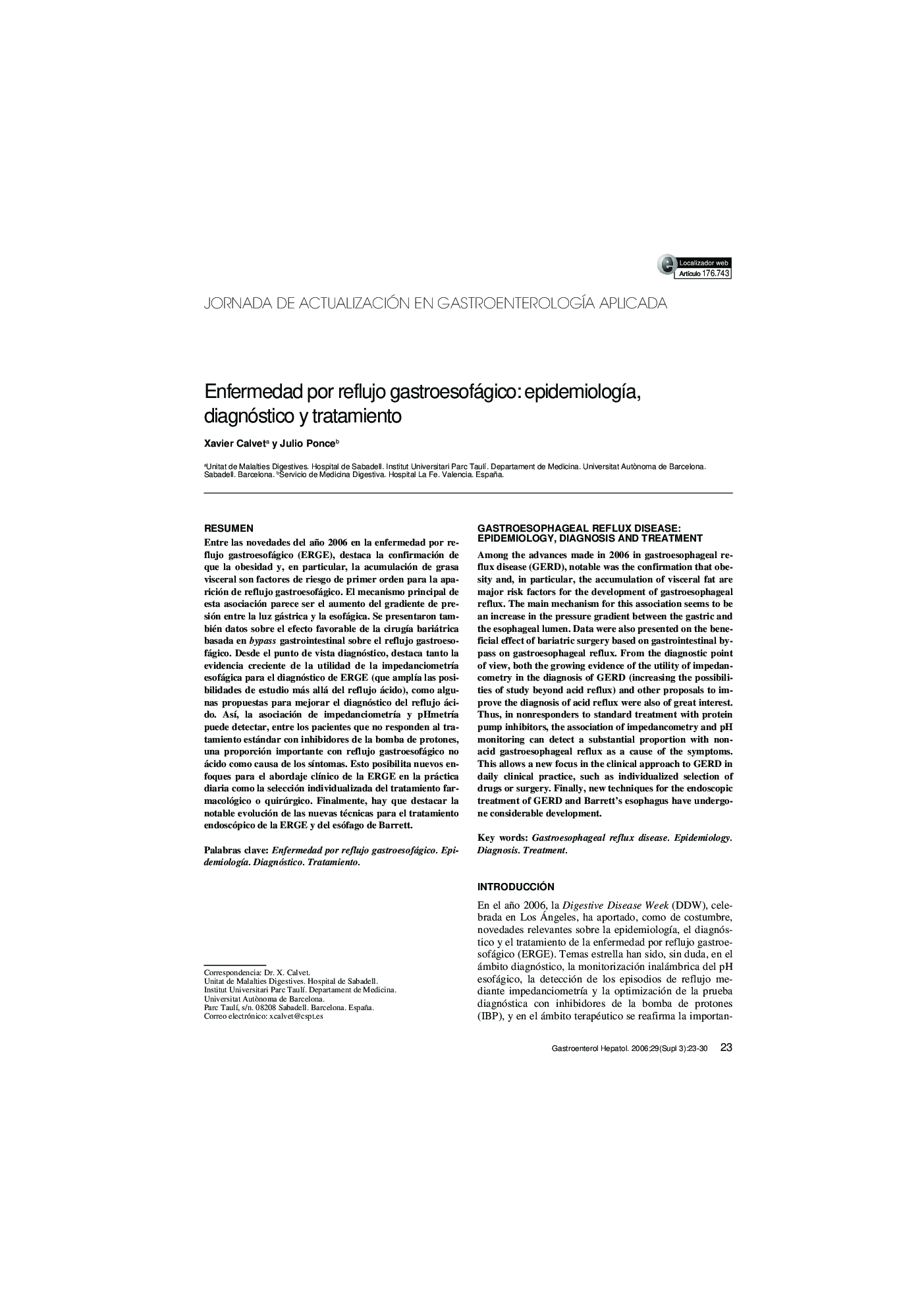| Article ID | Journal | Published Year | Pages | File Type |
|---|---|---|---|---|
| 3289440 | Gastroenterología y Hepatología | 2006 | 8 Pages |
Abstract
Among the advances made in 2006 in gastroesophageal reflux disease (GERD), notable was the confirmation that obesity and, in particular, the accumulation of visceral fat are major risk factors for the development of gastroesophageal reflux. The main mechanism for this association seems to be an increase in the pressure gradient between the gastric and the esophageal lumen. Data were also presented on the beneficial effect of bariatric surgery based on gastrointestinal bypass on gastroesophageal reflux. From the diagnostic point of view, both the growing evidence of the utility of impedancometry in the diagnosis of GERD (increasing the possibilities of study beyond acid reflux) and other proposals to improve the diagnosis of acid reflux were also of great interest. Thus, in nonresponders to standard treatment with protein pump inhibitors, the association of impedancometry and pH monitoring can detect a substantial proportion with nonacid gastroesophageal reflux as a cause of the symptoms. This allows a new focus in the clinical approach to GERD in daily clinical practice, such as individualized selection of drugs or surgery. Finally, new techniques for the endoscopic treatment of GERD and Barrett's esophagus have undergone considerable development.
Keywords
Related Topics
Health Sciences
Medicine and Dentistry
Gastroenterology
Authors
Xavier Calvet, Julio Ponce,
